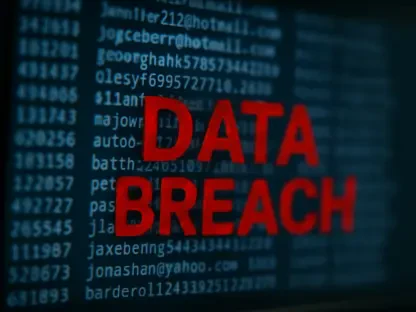What happens when a single misstep in a high-stakes environment triggers a digital tsunami that halts an entire financial institution? In the fast-paced world of investment banking, where every second counts, a London-based bank discovered the hard way that even minor changes can unleash catastrophic consequences. Picture billions of error emails flooding servers overnight, grinding critical operations to a halt. This gripping tale of tech gone wrong serves as a wake-up call for IT teams everywhere, exposing the razor-thin line between routine updates and total disaster.
The High Stakes of Banking Tech
In investment banking, system downtime isn’t just an inconvenience—it’s a potential multimillion-dollar loss. Overnight valuations of complex financial products like credit derivatives are the backbone of daily trading, ensuring accurate data for split-second decisions. When these systems falter, the fallout can shatter client trust and disrupt global markets. This particular incident, rooted in a seemingly trivial decision, underscores why tech reliability is non-negotiable in an industry where precision is paramount.
The scale of dependence on IT infrastructure has only grown, with studies estimating that a single hour of downtime can cost large financial firms upwards of $1 million. Beyond the numbers, the reputational damage lingers far longer, often eroding stakeholder confidence. This story isn’t just about a server crash; it’s a stark reminder of how interconnected and vulnerable modern banking systems have become.
Unraveling the Chaos: A Fatal Oversight
The disaster began innocently enough during a routine system update at a prominent London investment bank. A contractor, referred to here as Nick, led a team managing overnight valuations for credit derivatives, relying on a carefully configured Log4j plug-in to cap error email notifications at one every ten seconds. This safeguard was designed to prevent server overload, a critical buffer in an operation handling massive data volumes.
Enter a new project manager, eager to streamline processes but lacking insight into the system’s intricacies. Without consulting the team, this individual scrapped the rate-limiting plug-in during a Saturday release, dismissing it as redundant, while also neglecting an essential SQL script update. By early Sunday, the consequences were catastrophic: unchecked SQL errors spiraled into two billion individual emails, crashing the bank’s email servers in a matter of hours.
When Nick logged in at 2:00 AM to investigate, he found an eerie silence—no error logs, no clues, just a dead system. Unaware of the email flood, he restarted the calculations, inadvertently triggering another two billion messages. Restoring functionality took nearly two days, exposing how a single uninformed decision can cascade into a full-scale crisis at lightning speed.
Inside the Storm: Voices from the Crisis
Nick’s recounting of the ordeal paints a vivid picture of panic and confusion. “Logging in at 2:00 AM, there was nothing—just dead silence. The servers were choking on billions of emails, and there was no way to see the damage,” he recalled. His words capture the helplessness of navigating a crisis without diagnostics, a scenario all too familiar to IT professionals in high-pressure sectors.
Industry analysts point to a recurring theme in such debacles: unilateral decisions often spell disaster. Research from IT management journals indicates that over 60% of major system failures stem from poor communication or lack of team consensus before changes are made. Nick’s experience echoes this, highlighting how the project manager’s solo action bypassed critical checks, setting the stage for chaos.
Yet, amid the wreckage, a lesson emerged. The manager, initially the catalyst for the failure, adapted after the incident, embracing collaboration and ensuring future updates were vetted by the team. This shift illustrates that even the worst missteps can foster growth if accountability and teamwork take root.
Ripple Effects: Beyond the Server Room
The impact of the email flood extended far beyond overloaded servers, shaking the bank’s operational core. Traders, reliant on timely valuation data, faced delays that disrupted workflows and strained client interactions. While exact financial losses remain undisclosed, similar incidents in the sector have resulted in penalties and lost business worth millions, underscoring the tangible cost of tech failures.
Moreover, the event exposed broader vulnerabilities in banking IT systems, where scale amplifies even minor errors. A 2025 report by a leading cybersecurity firm notes that 78% of financial institutions have faced at least one significant system outage in the past two years due to untested updates. This incident serves as a case study in how unchecked changes can exploit those weak points, risking not just data but trust.
The human toll also looms large. IT teams, like Nick’s, bore the brunt of sleepless nights and intense scrutiny, a reminder that behind every tech disaster are individuals racing against time to contain the damage. Such pressure often leads to burnout, a hidden cost rarely quantified but deeply felt across the industry.
Charting a Safer Path: Lessons for Tomorrow
To prevent a repeat of this digital deluge, actionable strategies must be embedded in IT protocols. First, safeguards like rate-limiting for error notifications should never be optional—any move to disable them must be rigorously tested in controlled settings. This ensures systems can handle unexpected spikes without collapsing under pressure.
Second, no change, however small, should proceed without team consensus. Establishing mandatory review protocols can catch potential pitfalls before they escalate, a step that could have halted this disaster at the outset. Additionally, designing systems with worst-case scenarios in mind—anticipating error multiplication in large-scale operations—adds a crucial layer of resilience.
Finally, documentation and post-crisis analysis are vital. Every update must be logged and shared, closing gaps in awareness, while thorough debriefs after incidents rebuild trust and refine processes. Nick’s team eventually forged a stronger dynamic with the project manager through such reflection, proving that learning from failure can pave the way for more robust systems in the years ahead.
Looking Back, Moving Forward
Reflecting on this harrowing episode, the sheer scale of the disruption stood as a sobering lesson for the banking sector. The flood of billions of error emails not only crippled servers but also exposed the fragility of unchecked decisions in complex IT environments. It was a costly reminder that technology and teamwork are inseparable in high-stakes arenas.
The path forward demanded more than just technical fixes—it required a cultural shift toward collaboration and vigilance. By embedding rigorous safeguards, prioritizing consensus, and learning from each misstep, the industry took steps to shield itself from similar catastrophes. This incident, though devastating at the time, ultimately spurred a renewed focus on resilience, ensuring that future updates would be met with caution rather than calamity.









